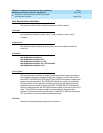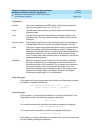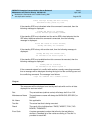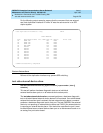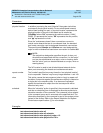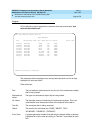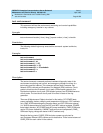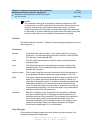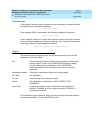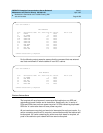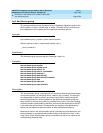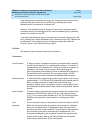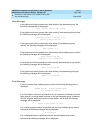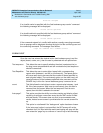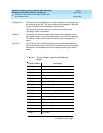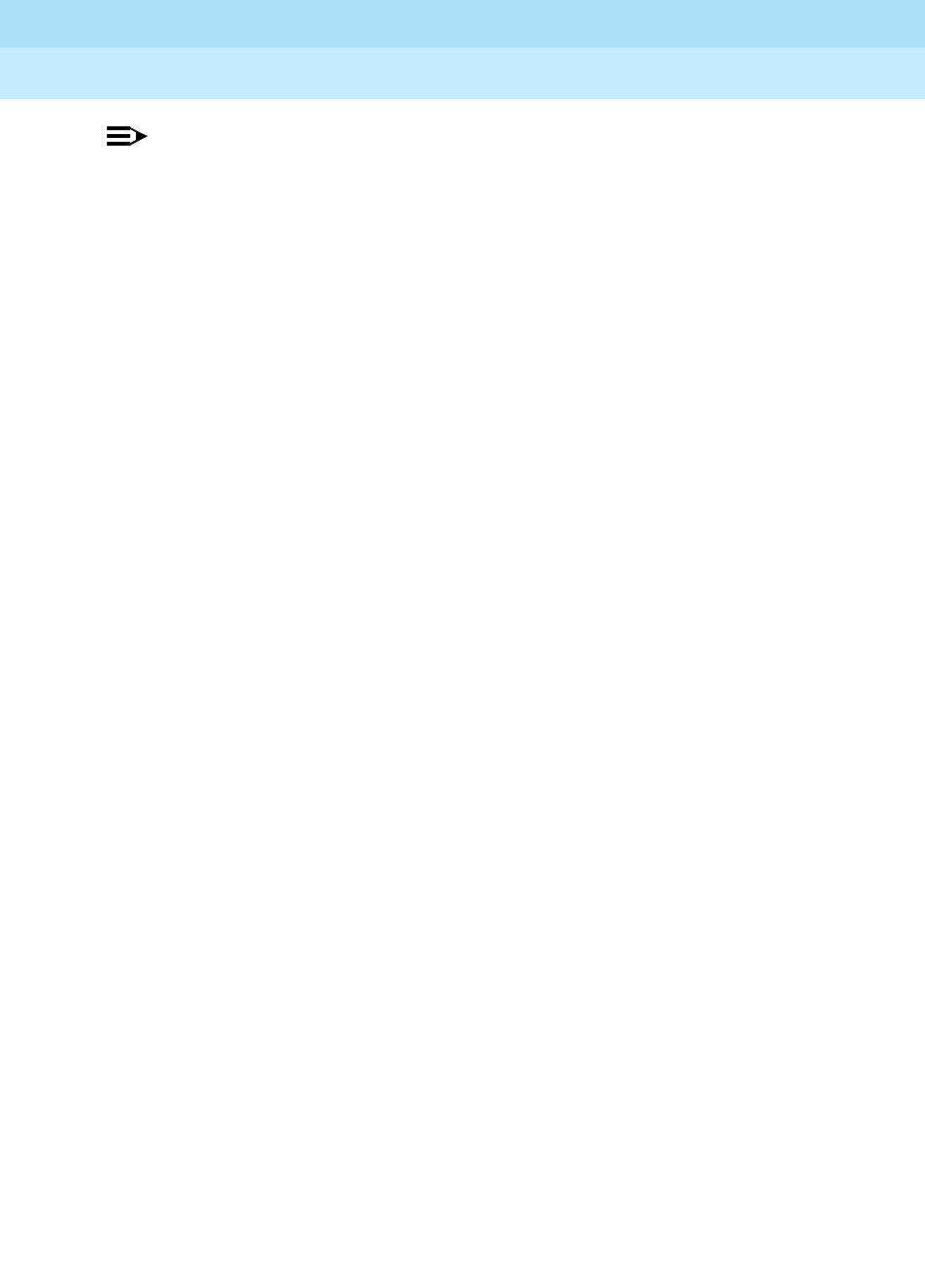
DEFINITY Enterprise Communications Server Release 5
Maintenance and Test for R5vs/si
555-230-123
Issue 1
April 1997
Maintenance Commands and Trouble-Clearing Aids
Page 8-581test environment
8
NOTE:
The processor carrier and its duplicate if present as well as any EPN
control carrier or an SCC carrier will not be recycled. All port carriers are
recycled, and service is interrupted for each port carrier. If a carrier
containing an active EI is recycled, communications with that cabinet will
be disrupted. If a carrier containing an active tone-clock board is recycled,
all ports in the cabinet or port network will have service disrupted.
Defaults
The default cabinet is cabinet 1. Defaults for the remaining parameters are short
with a repeat of 1.
Parameters
Help Messages
If the system technician presses HELP after entering "test environment," the
following message will be displayed:
Enter [cabinet(1-3)],[’long’ or ’short’],
[’repeat’(1-100) or ’clear’],[’schedule’]
location The location the cabinet number. The cabinet number is one or two
digits from 1 to 3 with leading zeros allowed. Cabinet 1 is the PPN with
2-3 referring to some optional EPN.
short This will cause the command to execute a series of nondestructive
diagnostic tests.
long This will execute a more comprehensive and longer version of the
diagnostic tests. This includes both destructive and nondestructive
tests for this command.
repeat number The "number" specifies how many times each test in the sequence is
to be repeated. "Number" may be any integer between 1 and 100.
clear This option causes the test sequence (short or long) to repeat until the
alarm (if one exists against the maintenance object) is cleared or a
single test in the sequence fails. If no alarms are registered against the
maintenance object then the test sequence will be exercised only
once. The long clear option forces a clear of all alarms if no errors are
encountered during testing. The short clear option only clears alarms
pertinent to tests in the short sequence.
schedule When the "schedule" option is specified, the command is validated
and then a scheduling form is displayed to allow the technician to
schedule execution of the command. The command is then placed in
the command queue and is executed at the specified time. The
information displayed by the command is sent to the system printer
instead of the screen. Refer to the Report Scheduler and System
Printer feature specification [1] for more details.



